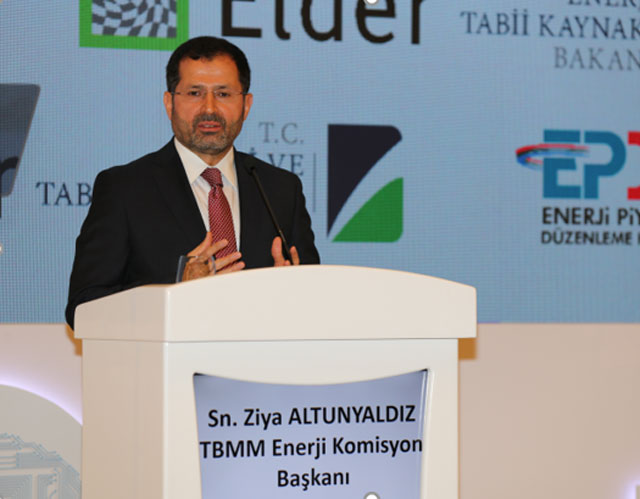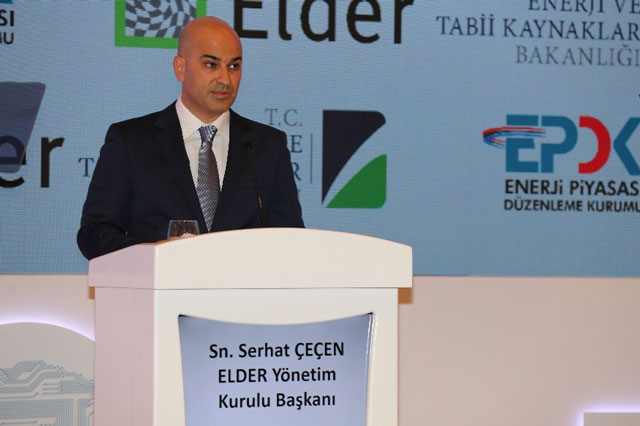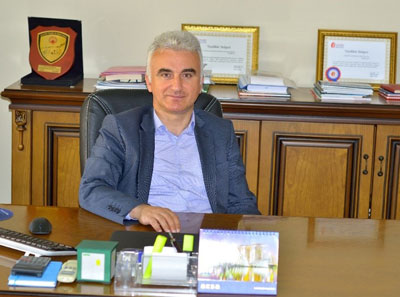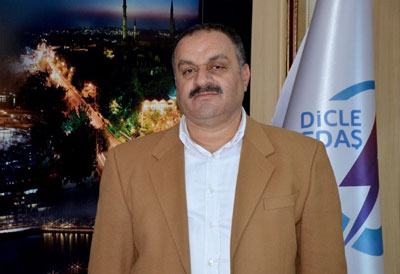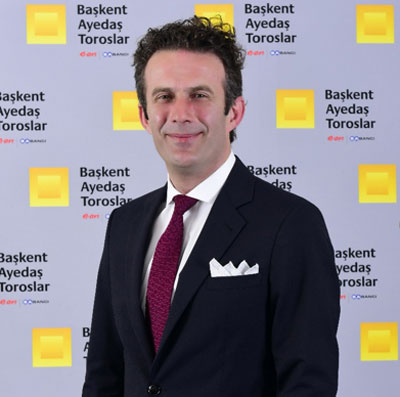
As part of his three-day visit to the U.K. which began on Sunday, President Recep Tayyip Erdoğan met with members of the British business world that have investments in Turkey or are seeking opportunities in the country at Bloomberg in London. President Erdoğan met with Queen Elizabeth II and with British Prime Minister May. During his meetings, bilateral relations between the two countries and regional issues were discussed. Turkish and British officials also held delegation and one-on-one meetings.
Signing a new trade agreement between Turkey and U.K. after Brexit and increasing the bilateral trade volume between the two countries to $20 billion were addressed during the president's visit.Speaking to the BBC's HARDTalk on late Sunday, Erdoğan elaborated on the bilateral economic relations between the two countries. He said there are good opportunities to further develop trade relations, which currently stands at around $17 billion in the post-Brexit period.
Currently, more than 3,000 firms with U.K. capital operate in the country and the investment amount by British firms has neared $9.9 billion from 2002 to February 2018, according to the data from the Economy Ministry. The share of British investment makes up 6.7 percent of Turkey's total foreign direct investment (FDI) basket.
Besides, Erdoğan said the two countries currently have collaborations in the defense industry and that they will be carrying an effort to develop them further.
Speaking at the 7th Turkish-British Tatlıdil Forum on Sunday, the president recalled that bilateral trade volume with the United Kingdom reached $16.2 billion in 2017 and that this year bilateral trade grew by 39 percent in January-March alone, reaching $5 billion.
He pointed out that they aim to reach $20 billion in bilateral trade volume.
"I believe that the potential of the two countries is above this figure. To achieve this goal, investments and joint projects are especially important," Erdoğan said, adding that the United Kingdom has been among the countries with the most investments in Turkey by investing close to $10 billion directly in the country in the last 15 years.
He recalled that the Talıdil Forum was launched in 2011 during his term as prime minister, while he was visiting the U.K. The president said that the function and operational scope of the forum would be further improved in the upcoming period.
"Turkey attributes great importance to its collaboration with the U.K., and the Tatlıdil Forum has made significant contributions to strengthen cooperation between the two countries," he said.
The two countries are working on an important joint defense project to develop and produce Turkey's national jet fighter, the TF-X. During British Prime Minister May's visit to Turkey in January 2017, British defense contractor BAE and Turkey's defense giant Turkish Aerospace Industries (TAI) signed an agreement worth about 100 million pounds. TAI's TF-X is a twin-engine all-weather Turkish aerial superiority fighter jet. The thrust of each motor is said to reach 20,000 pounds. The jet will also be able to reach an altitude of 55,000 feet, while its range will be around 600 miles.
"Hopefully, we will undertake many more joint projects with strategic priorities in the field of defense industry. As the governments of both Turkey and the U.K., we want our economic cooperation to continue without interruption after Brexit," he continued. Turkey and the U.K. in early August of last year agreed to provide co-financing for various projects and contracts within the scope of an agreement aiming to strengthen commercial cooperation and increasing investment between the two countries.
The U.K. Export Finance Agency (UKEF) and its counterpart in Turkey, Eximbank, signed an agreement with the U.K. government increasing its support for the British companies trading with Turkey.
Investment forum emphasizes favorable climate in Turkey
The "Invest in Turkey" forum was held in the U.K. on May 11 with Investment Support and Promotion Agency of Turkey (ISPAT) representatives, credit rating firms, banks as well as Turkish and British investors in attendance.
The event discussed Turkey's mega projects in energy, transportation, healthcare, infrastructure and investment, providing extensive information on the country's latest regulatory framework and incentives. Local and foreign investors including Limak, European Bank for Reconstruction and Development (EBRD), South Korea's Eximbank, Otoyol A.Ş., Rönesans Holding, IC Holding, Astald, and Türkerler Holding shared their experiences as contractors in the country's megaprojects, including the Renewable Energy Resource Zones (YEKA), transport infrastructure and healthcare projects. The forum underlined Turkey's major investments in transport infrastructure projects, which has received over $90 billion in the last decade. The Ministry of Transport, Maritime Affairs and Communication will also invest in around 3,500 projects, including bridges, highways, tunnels, and airport in Turkey.
Source: Daily Sabah

ELDER 11th Sector Meeting was held in Bursa on May 11, 2018 with the participation of Minister of Energy and Natural Resources Berat Albayrak, bringing together senior representatives of the public and private sectors in the energy field.
The opening speech of the meeting was conducted by Energy and Natural Resources Minister Berat Albayrak, Turkish Grand National Assembly Industry, Trade, Energy, Natural Resources, Information and Technology Commission President Ziya Altunyaldiz, Energy Market Regulatory Authority Chairman Mustafa Yilmaz and Association of Electricity Distribution Services Chairman Serhat Çeçen.
The minister stated that Trans Anatolian Natural Gas Pipeline Project (TANAP) is due to start operation on June 12 and the project will start operating with a grand ceremony with President Recep Tayyip Erdoğan, Azerbaijani President İlham Aliyev, other heads of state and ministers in attendance.
He also announced that Turkey will begin its first solo deep-sea oil and gas drilling in the Mediterranean before the end of this summer. Lauding the country's achievements under a new national energy and mining policy, Albayrak said: "We are also going to great lengths to ensure there is no let-up in this momentum."
The energy minister also emphasized that electricity distribution companies have taken significant steps and got improvement in customer satisfaction and added: "The best results in the customer satisfaction survey we conducted as a ministry came from call centers. Call 'centers response rate' increased to99,39 percent . The rate of response of the call centers in 20 seconds, which we set the minimum 80 percent target, increased to 91.73 percent. The rate of response has reached 96.23 percent, which was 95.2 percent. We are confronted with a picture that our people are now more satisfied with, that his work is more aware and appreciated. We have seen an increase in the satisfaction of most of our companies compared to the previous year when we look at the performance of 21 distribution companies. The higher the citizen satisfaction, the greater the value and reputation of the company. Otherwise the value of the company falls and we cannot fulfill the promise we gave to the citizens as a ministry, so we do it at this point."
Indicating that electricity distribution sector is one of the most coordinated and organized industry in Turkey, TMBB Industry, Trade, Energy, Natural Resources, Information and Technology Commission President Ziya Altunyaldiz said: "If you don’t have energy security, it means that you don’t have economic growth. We have an economy that grew by an average of 5 percent between 2003 and 2017. We have achieved that growth with the policies of our government and your hard work. In the period of 2017-2020, growth of 5.4% is foreseen. There is a linear relationship between economic growth and energy supply security.”
EMRA President Mustafa Yilmaz, who says that consumer satisfaction is directly related to the satisfaction of the manager who works in the sector or the worker who make effort for the sector: "We have seen that the distribution sector has caught this high gear, even in the new tariff period. Distribution companies are investing 4 billion TL in 2016. This figure reached to 4.7 billion TL in 2017 and it was a realization about 34 percent of the projected annual investment ceiling. So, companies preferred to use the board approved investment budget for the implementation period earlier and proved that they are enthusiastic about investment."
Underlining that they have the responsibilities brought by National Energy Policy as the sector, ELDER Chairman Serhat Çeçen said: "In 2016, we realized TL 4.3 billion of our investment commitment for the 3rd Tariff Period covering 2016-2020, which was previously set as TL 20 billion. In 2017, we realized TL 5.9 billion of that. Within our total investments, our R&D investments reached over TL 200 million. On the other hand, we have allocated TL 2 billion to technology investments for the coming period. Priority in the sector is to renew the network, which is 30 years old. As I mentioned before, we invested TL 5.9 billion only in 2017. 80% of this figure was direct network investment."
"Our goal is to renew the whole grid until 2020 and then quickly convert those into smart grid. In this context, we carried out Smart Grid Roadmap 2023 project with the participation of 21 electricity distribution company in the Elder coordination in Turkey. With renewable energy formulas, we will focus on collecting, analyzing and transferring data in the direction of this road map, which will provide significant contributions to reduction of carbon emissions. We believe that this project, which we have been living up to for the active participation of consumers in the electricity market, will contribute to increase share of renewable energy and to improve our service quality further and it will be the most important guide towards the smart grid in the country."
ÇORUH Electricity Distribution Company CEO Mehmet Aydın
In 2018, we will put our outage management system into use with our technology investments. During the whole process, field workforce management systems will be used and it will be integrated into technological infrastructure. After completion of that integration process, our customer satisfaction level will be increased.
DİCLE Electricity Distribution Company CEO Murat Karagüzel
2017 became a year of investment. We doubled our investment budget required by the Regulator and made TL 400 million investment in 2017. Investments enhanced customer satisfaction level. We are aiming to double this year’s investments as well. Our fundamental goal for 2018 on the other hand is to decrease the illegal use rate in our distribution region.
ENERJİSA Electricity Distribution Company CEO Murat Pınar
As Turkey’s biggest electricity distribution company, we continue our operations in 14 provinces by serving more than 20 million people in Turkey. In 2017, we took significant steps in our R&D studies on national and international area. In 2018, we project TL 1.5 billion investment. We attach great importance to operational excellency, digital channels, technology and product development and we will create value for our customers by benefiting from those.
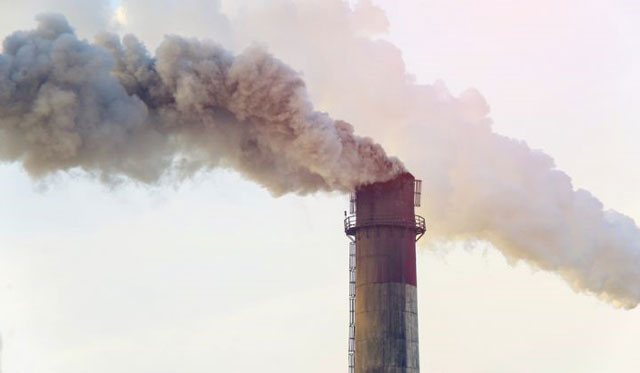
European Union carbon emissions grew 1.8 percent in 2017 despite a 25 percent increase in wind power and 6 percent growth in solar, figures show. The European statistics body Eurostat this month reported that carbon dioxide emissions rose last year in a majority of EU member states.
The best-performing countries were Finland, which cut emissions by 5.9 percent, and Denmark, which posted a 5.8 percent decrease.
Germany, which is by far Europe’s largest polluter, accounting for 23 percent of emissions, also managed to improve its performance, but just barely. Germany posted a 0.2 percent improvement on 2016 levels of carbon dioxide.
The EU’s second-largest emitter, the U.K., also managed to cut its carbon dioxide output, by a respectable 3.2 percent. But Italy and France both posted a 3.2 percent rise, increasing their share of emissions to 10.7 percent and 10 percent, respectively.
The highest increases were for Malta, which went up 12.8 percent, Estonia, with 11.3 percent, and Bulgaria, with 8.3 percent. Despite the rises, these three nations only accounted for just over 2 percent of total carbon dioxide emissions in the EU in 2017.
Arguably one of the biggest carbon culprits in 2017 was Spain, which saw emissions levels going up by 7.4 percent to take a 7.7 percent share of all the carbon dioxide in the EU.
Despite having excellent solar, wind and hydro reserves, Spain has suffered from a poor regulatory environment for renewables in recent years.
Over the last decade, the government has imposed curbs on small-scale renewable development and introduced regulatory uncertainty for large-scale projects, only recently reviving developer hopes with a series of major auctions aimed at meeting EU targets.
The projects arising from these have yet to come online, though. In the meantime, figures from grid operator Red Eléctrica de España show the proportion of renewables, as a share of total energy demand, dropped from 42.8 percent in 2014 to 33.8 percent in 2017.
In total, 20 EU member states saw emissions rise in 2017, while only seven managed to cut their carbon dioxide output. Eurostat said the Swedish data was still under revision, so it was not included.
The net rise in emissions, attributed to economic growth across much of the EU, illustrated how hard it will be for the bloc to achieve its target of cutting carbon to 40 percent below 1990 levels in 2030 and progressing to 60 percent by 2040.
Last year saw EU member states adding a record 15.6 gigawatts of wind power and 340 megawatts of solar. Wind represented 55.2 percent of all new power generation installed in 2017, with solar making up a further 21.3 percent.
In contrast, new gas plants accounted for just 9.2 percent of capacity additions, and coal was a further 6.1 percent. Despite this, “the reduction of emissions blamed for climate change remains a challenge,” reported Reuters.
Molly Walsh, renewables campaigner at Friends of the Earth Europe, said the figures showed that the EU Emissions Trading System (ETS), the first and currently biggest greenhouse gas emissions trading scheme in the world, was not doing its job.
“This worrying rise in emissions shows that while renewables continue to grow, the most polluting energy sources are not being eliminated quickly enough,” she said.
“These figures demonstrate the ETS is not functioning as a mechanism to deliver the fossil-free future Europe needs, and should not be relied on," said Walsh. "Europe only has five to nine years left of current emissions levels if we want to limit warming to the 1.5 degrees considered safe."
An analysis of ETS figures by Sandbag, a Brussels and London-based not-for-profit climate change policy think tank, determined that the increase in emissions across the EU was largely due to greater use of lignite to fuel industrial growth.
“For the first time, lignite emissions overtook hard coal emissions,” said Sandbag.
With electricity demand rising in many countries, even the breakneck deployment of wind and solar was not fast enough in 2017 to reduce the need for lignite generation, it claimed.
“The build-rate of wind and solar is not high enough to sustain falls in power sector emissions, especially as electricity demand increases and nuclear plants close,” it said.
Source: Greentech Media
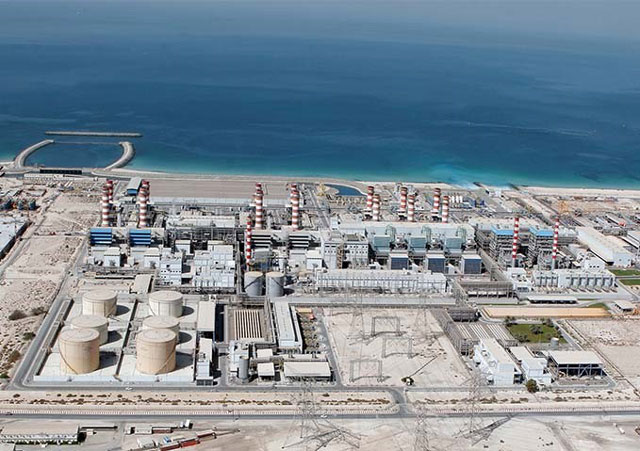
Dubai Electricity and Water Authority (DEWA) has announced that the energy savings programme implemented in its buildings and at electricity generation and water production plants, has achieved savings exceeding AED15 million in 2017. This supports DEWA’s vision to become a sustainable innovative world-class utility. DEWA has set up an energy-management committee to increase the efficiency of electricity and water use in its buildings by implementing a number of measures to rationalize and monitor use, as well as identify and address the causes of any increase in consumption. The internal procedures have contributed to annual savings of AED1.86 million. In addition, DEWA signed two Energy Savings Performance Contracts (ESPCs) with Etihad Energy Services Company (Etihad ESCO) to improve and enhance the overall energy efficiency of the lighting infrastructure of the power and water plants at Jebel Ali, as well as 7 of DEWA’s buildings. Etihad ESCO conducted a technical audit for DEWA’s facilities to identify energy efficiency measures to reduce consumption.
“Through the two energy-efficiency projects in DEWA’s buildings and electricity and water production plants, we aim to become a role model for implementing energy efficiency practices. This is done through Energy Savings Performance Contracts in cooperation with the private sector. This also supports the Dubai Clean Energy Strategy 2050 to transform Dubai into a global hub for clean energy and green economy and establish a sustainable model of energy conservation that supports economic growth without damaging the environment or its resources. Our goal is to become the city with the lowest carbon footprint in the world by 2050. These efforts also support the Demand Side Management Strategy to reduce electricity and water use by 30% by 2030,” said HE Saeed Mohammed Al Tayer, MD & CEO of DEWA.
The first project involves the introduction of state-of-the-art energy-saving systems and the use of high-efficiency lighting systems at DEWA’s electricity and water stations in Jebel Ali. The first phase of the project, which was implemented in 2016, included the installation of 8,508 LED lighting units, which contributed to a 76% reduction in consumption, equivalent to annual savings of AED6.8 million with the costs being recouped within 3 years. The second phase, which was implemented in 2017, included the installation of 15,000 LED lighting units to achieve an annual saving of AED 4.22 million with the costs being recouped within 5 years. The third phase of the first project is currently being implemented to replace nearly 35,000 lighting units. It is expected to save AED10 million annually with the costs being recouped within 3 years. The second project involves retrofitting 7 of DEWA’s buildings, through improvements in air conditioning systems and equipment, water systems, lighting and installation of motion sensors to control them, as well as thermal insulation of the glass facades. This contract will reduce electricity and water consumption by 30%, saving AED 2.23 million annually, with the costs being recouped within 6 years. The two projects are expected to contribute to reducing carbon dioxide emissions by 22,750 metric tons annually, equivalent to planting 26,700 trees annually.
Source: DEWA

California will now require solar panels on most new homes, extending the state’s role in pushing some of the strictest environmental regulations in the United States. But this feel-good change to the building code is a questionable public policy for cutting greenhouse-gas emissions. The big problem with the California Energy Commission’s new mandate—which passed on May 9 and goes into effect in 2020—is cost. Compared with solar power plants, rooftop solar is “a much more expensive way of increasing renewables on the grid,” says Severin Borenstein, an economics professor at the University of California, Berkeley, who shared his concerns in a letter to one commissioner.
In fact, residential solar systems cost between 12.9 and 16.7 cents per kilowatt-hour averaged over their lifetime, according to a National Renewable Energy Laboratory report last year. That’s more than double the cost of utility-scale solar systems, which range from 4.4 to 6.6 cents.
As it is, it’s going to be incredibly expensive and difficult to overhaul the energy system, so researchers stress that it’s crucial to follow the most cost-effective paths possible.
“I think there are indeed limited political resources that can be mustered against climate change,” Borenstein said in a follow-up e-mail. “By demonstrating a very expensive way to reduce greenhouse gases, I think this could very likely be used in other states and countries as an argument against moving toward renewable energy.”
The new rule could add more than $10,000 to the costs of building a home, raising the price tag in what’s already one of the most expensive states to purchase housing. But buyers are expected to pay lower monthly energy bills as a result of this change and eventually save money over time.
Borenstein notes that these savings are effectively subsidized by other ratepayers without solar panels, net metering, and solar tax credits.
California has already made giant strides in adding renewable-energy generation, which has started to create its own set of problems. On very sunny days, the state’s solar plants can generate more energy than the system is able to use, pushing prices into negative territory.
Effectively integrating a growing supply of intermittent solar and wind energy will require adding far more storage, transmission, and smart grid systems. As it stands, the state’s grid operator lacks basic tools for monitoring, communicating, and reacting to a continually shifting supply of rooftop solar.
California estimates that the new rule will cut emissions by 1.4 million metric tons over three years, which is a small fraction of the 440 million tons the state generated in 2015. As others have pointed out, policies requiring higher residential density would do far more to
emissions, largely by discouraging people from driving cars. But such proposals are far more controversial than solar panels. Last month, California legislators killed a bill that would have overridden local rules to allow five-story housing development along transit centers.
“While additional distributed renewable electricity will be helpful, California’s climate elephant in the room remains the greenhouse gases from people driving cars,” said Costa Samaras, an assistant professor of environmental engineering at Carnegie Mellon University, in an e-mail. “Increasing the density of housing near employment centers and encouraging housing near transit, as well as the continued electrification of transportation, are essential to deep decarbonization in California.”
Source: MIT Technology Review
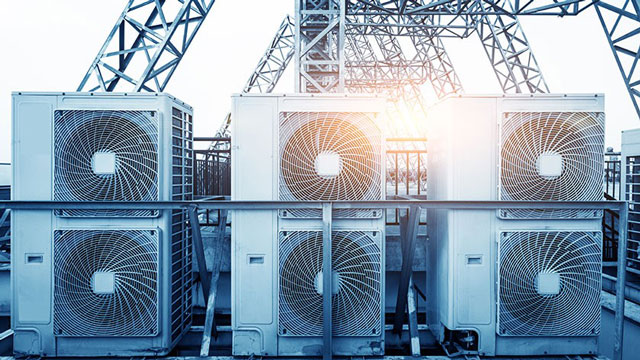
The growing use of air conditioners in homes and offices around the world will be one of the top drivers of global electricity demand over the next three decades, according to new analysis by the International Energy Agency that stresses the urgent need for policy action to improve cooling efficiency.
A new IEA report – “The Future of Cooling” – shows that without new efficiency standards the world will be facing a “cold crunch” from the growth in cooling demand in coming decades.
Global energy demand from air conditioners is expected to triple by 2050, requiring new electricity capacity the equivalent to the combined electricity capacity of the United States, the EU and Japan today. The global stock of air conditioners in buildings will grow to 5.6 billion by 2050, up from 1.6 billion today – which amounts to 10 new ACs sold every second for the next 30 years, according to the report.
Using air conditioners and electric fans to stay cool already accounts for about a fifth of the total electricity used in buildings around the world – or 10% of all global electricity consumption today. But as incomes and living standards improve in many developing countries, the growth in AC demand in hotter regions is set to soar. AC use is expected to be the second-largest source of global electricity demand growth after the industry sector, and the strongest driver for buildings by 2050.
Supplying power to these ACs comes with large costs and environmental implications. One crucial factor is that the efficiency of these new ACs can vary widely. For example, ACs sold in Japan and the European Union are typically 25% more efficient than those sold in the United States and China. Efficiency improvements could cut the energy growth from AC demand in half through mandatory energy performance standards.
“Growing electricity demand for air conditioning is one of the most critical blind spots in today’s energy debate,” said Dr Fatih Birol, the Executive Director of the IEA. “With rising incomes, air conditioner ownership will skyrocket, especially in the emerging world. While this will bring extra comfort and improve daily lives, it is essential that efficiency performance for ACs be prioritized. Standards for the bulk of these new ACs are much lower than where they should be.”
The report identifies key policy actions. In an Efficient Cooling Scenario, which is compatible with the goals of the Paris Agreement, the IEA finds that through stringent minimum energy performance standards and other measures such as labelling, the average energy efficiency of the stock of ACs worldwide could more than double between now and 2050. This would greatly reduce the need to build new electricity infrastructure to meet rising demand.
Making cooling more efficient would also yield multiple benefits, making it more affordable, more secure, and more sustainable, and saving as much as USD 2.9 trillion in investment, fuel and operating costs.
The rise in cooling demand will be particularly important in the hotter regions of the world.
Today, less than a third of global households own an air conditioner. In countries such as the United States and Japan, more than 90% of households have air conditioning, compared to just 8% of the 2.8 billion people living in the hottest parts of the world.
The issue is particularly sensitive in the fastest-growing nations, with the biggest increase happening in hot countries like India – where the share of AC in peak electricity load could reach 45% in 2050, up from 10% today without action. This will require large investments in new power plants to meet peak power demand at night, which cannot be met with solar PV technology.
“Setting higher efficiency standards for cooling is one of the easiest steps governments can take to reduce the need for new power plants and allow them at the same time to cut emissions and reduce costs,” said Dr Birol.
“The Future of Cooling” is the second IEA report that focuses on “blind spots” of the global energy system, following the “The Future of Trucks,” which was released in July 2017. The next one in this series – “The Future of Petro-Chemicals” – will examine ways to build a more sustainable petrochemical industry. It will be released in September.
Source: IEA
Agenda
Energy Infrastructure Forum 2018
May 24 – 25 / Denmark
Eurelectric Power Summit 2018
June 4 – 5 / Slovenia
EU Sustainable Energy Week (EUSEW) 2018
June 4 – 8 / Belgium
Electrify Europe Conference & Exhibition
June 19 - 21 / Vienna
Grid Edge Innovation Summit 2018
June 20 – 21 / San Francisco, CA

